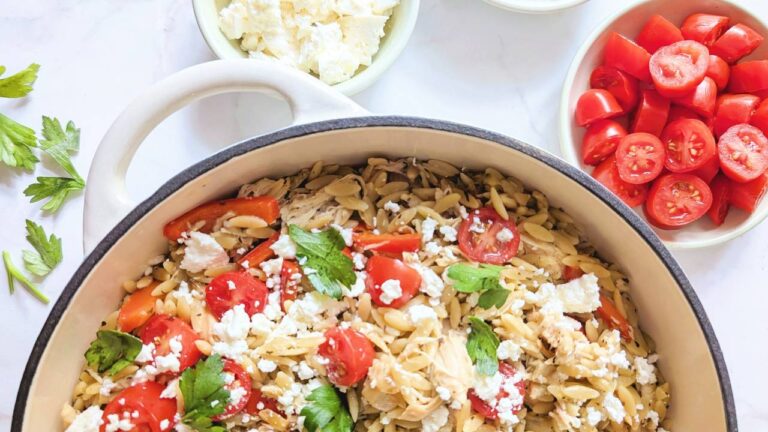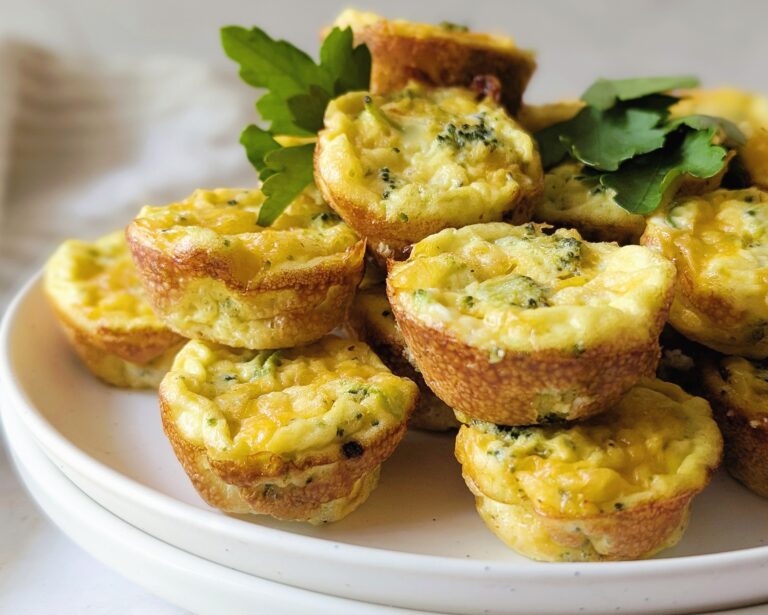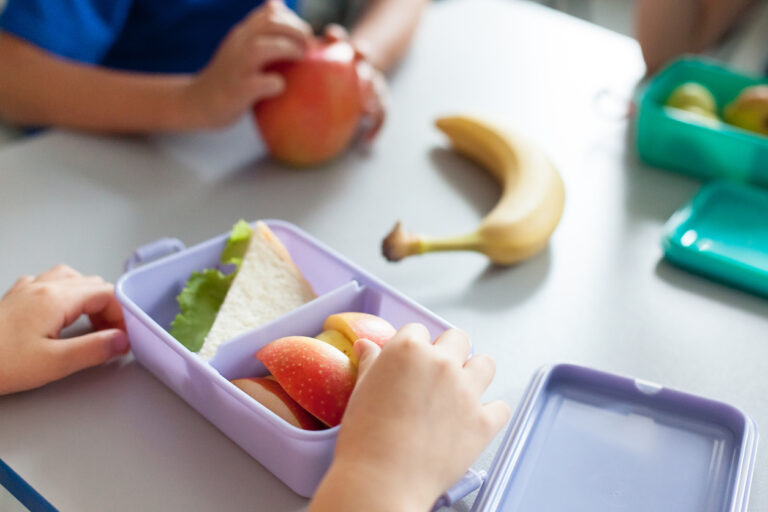High-Protein Lunchbox Ideas for Kids (From a Dietitian Mom)
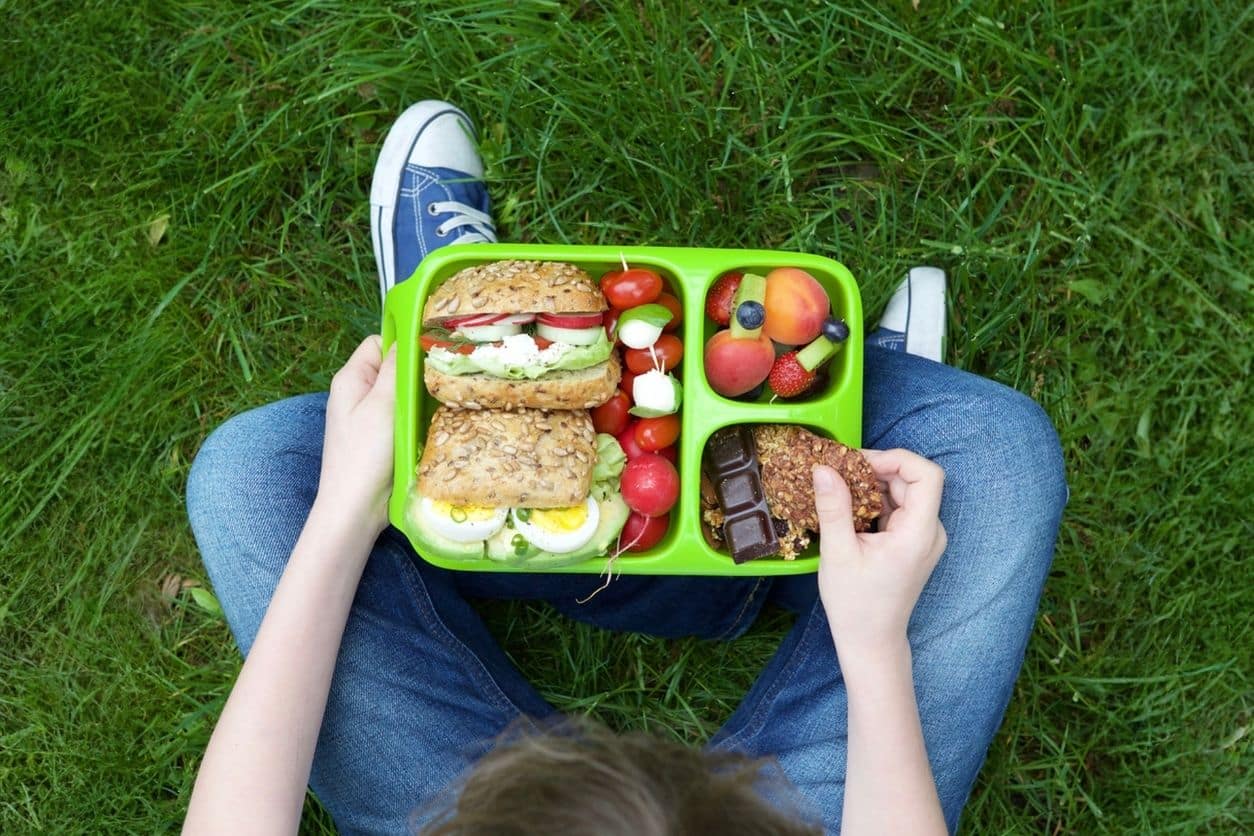
If you’ve opened your child’s lunchbox after school and found most of it untouched, you’re not alone. As a registered dietitian and mom of three, I know the daily juggle well: you want lunches that are easy to pack, kid-approved, satisfying, nut-free, and meeting their nutrient needs.
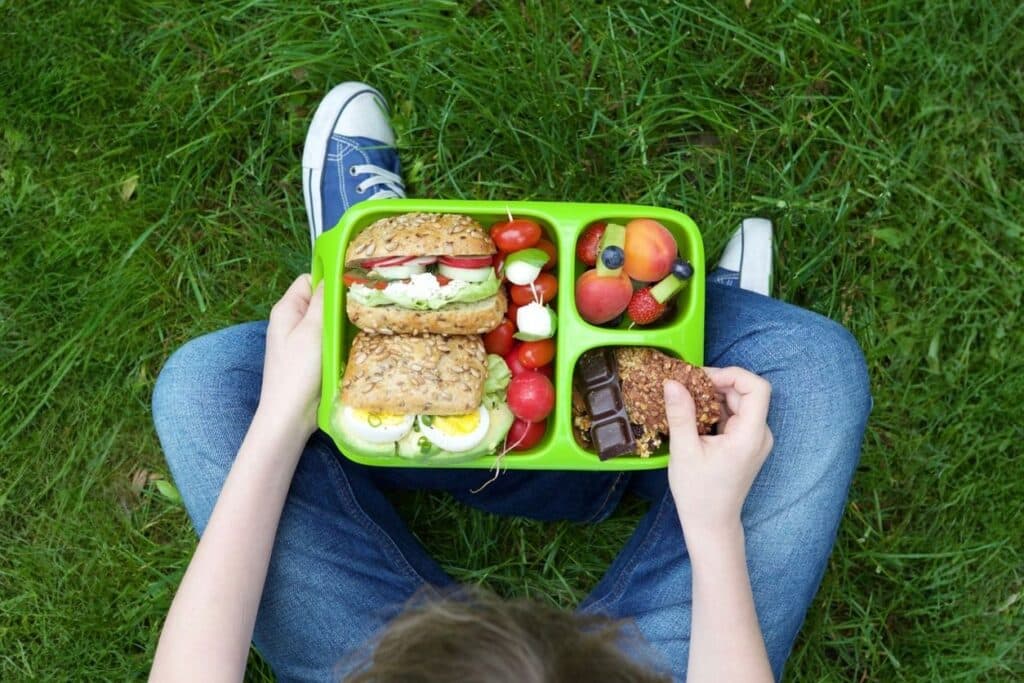
One nutrient many parents are focusing on right now is protein. If you’d like tailored support, my team offers nutrition counselling for kids and families (virtual across Canada), and ongoing tools and coaching are available inside the Nourished Families Network (enrollment is open!).
Protein gets a lot of hype, and it can feel like you should add it to everything. The good news: most kids don’t need more and more protein, they just need enough spread across the day, along with carbs, fibre, fats, and plenty of colour from fruits and veggies. When lunch includes a reliable protein plus a few simple sides, kids tend to have steadier energy and better focus. For practical inspo, check out my Bento Box Lunch Ideas.
In this post, I’ll walk you through how much protein to aim for at lunch, a simple formula for building nourishing boxes, and a big list of nut-free lunch ideas with estimated protein counts.
Why protein matters in kids’ lunchboxes
Protein helps keep kids energized, focused, and feeling satisfied through the school day. When it’s paired with carbohydrates, dietary fibre, and fats, it slows digestion just enough to prevent that mid-afternoon slump (and the “I’m starving!” right after school). It also supports immune health, growth, and recovery after busy play or sports.
The goal isn’t to cram in as much protein as possible—it’s simply to include enough alongside other nutrients so kids feel and function their best. As a general guide, most school-age kids do well with roughly 10–20 grams of protein at lunch, depending on age and activity level. You can get there with one main protein (like chicken, eggs, or Greek yogurt) or a few smaller ones (like hummus, cheese, and seeds). Think of these numbers as gentle estimates, not targets you need to hit perfectly every day.
Use the lunchbox ideas below as mix-and-match templates—not rules. Kids’ appetites change from day to day, and that’s completely normal. If you’d like a deeper dive into protein needs by age, you can check out my post Protein for Kids: How much do kids need and what are the best sources?.
What counts as a “high-protein” lunch for kids?
“High-protein” for kids doesn’t have to be extreme. If lunch lands in the 10–20 g range, great! You can get there with foods many kiddos already enjoy.
Protein sources for lunch boxes (all school-safe; always follow your school’s allergy policy and check labels for “may contain” warnings)
- Dairy: Greek yogurt (¾–1 cup ≈ 12–18 g), cottage cheese (½ cup ≈ 12–14 g), cheese stick (≈ 5–7 g), milk or shelf-stable milk box (1 cup ≈ 8 g).
- Eggs & fish: 1 hard-boiled egg (≈ 6 g), tuna or salmon (3 oz ≈ 17–22 g; mix with yogurt or mayo).
- Poultry & meat: chicken or turkey (2–3 oz ≈ 14–21 g), lean beef in chili or meatballs.
- Beans & lentils: ½ cup beans or lentils (≈ 7–10 g), refried beans in quesadillas, lentil bolognese.
- Soy & seeds: edamame (½ cup ≈ 8–9 g), tofu (3 oz ≈ 8–10 g), sunflower seed butter or pumpkin seed butter (2 tbsp ≈ 6–8 g), hemp hearts (2 tbsp ≈ 6–7 g), pumpkin seeds (¼ cup ≈ 8–9 g).
- Soy or dairy-free yogurts: check labels—many soy yogurts provide ≈ 6–9 g per ¾–1 cup.
Remember: protein works best in a balanced lunch with carbs (energy), fibre (staying power), fats (satisfaction), and fruit/veg (vitamins, minerals, and colour). Variety in foods is the most important thing.

A simple formula for building lunch boxes (nut-free)
Use my easy Rule of 4 to keep things balanced and low-stress:
- Protein: 1–2 choices
- Carb: ideally whole-grain or a starchy vegetable
- Colour: fruit and/or veg your child usually eats
- Fun: a dip, a small sweet, nut-free granola bar, or a crunchy extra snack
Preschooler example (small hands, simple textures)
- Protein: mini egg muffin or 2–3 turkey roll-ups
- Carb: 4–6 whole-grain crackers
- Colour: cucumber coins + berries
- Fun: yogurt dip or a nut-free mini muffin
Elementary example (likes variety)
- Protein: ½–¾ cup Greek yogurt or bean-and-cheese quesadilla wedge
- Carb: small pita or leftover pasta salad
- Colour: baby carrots + apple slices
- Fun: homemade cookie
Tween/Teen example (bigger appetite, short lunch period)
- Protein: chicken, tuna, or lentil wrap or a thermos of chili
- Carb: whole-grain wrap or rice/quinoa
- Colour: grapes + snap peas
- Fun: homemade brownie + extra snack
- Check out my post on healthy school lunches for teens.
Make it appealing by offering two colours, bite-size pieces, and at least one “safe” food you know your child will eat. Let them choose the dip or the fruit. Small choices build buy-in.

29+ High-Protein Lunch Box Ideas
(Protein counts are estimates and will vary by brand and portion. Adjust portions for age and appetite.)
1) Sandwiches & Wraps (all nut-free)
1. Turkey-cheese roll-up wraps
Whole-grain tortilla + 3 oz sliced turkey + 1 slice cheese + lettuce.
Protein: ~22–26 g
Sides: baby carrots, ranch, grapes.
2. Chicken-avocado pinwheels
Small tortilla + 2½ oz cooked chicken + mashed avocado + lime.
Protein: ~18–22 g
Sides: cherry tomatoes, orange slices.
3. Lentil-cheese quesadilla
Whole-grain tortilla + ½ cup cooked lentils + ¼ cup shredded cheese.
Protein: ~18–20 g
Sides: salsa, cucumber coins.
4. Tuna-apple salad sandwich
~2½ oz light tuna mixed with yogurt or mayo + diced apple on whole-grain bread.
Protein: ~18–22 g
Sides: snap peas, small cookie.
5. Hummus & roasted chicken pita
Small pita + 3 tbsp hummus + 2 oz roasted chicken + lettuce.
Protein: ~18–22 g
Sides: bell pepper strips, melon.
6. Sunflower seed butter & jam “sushi” rolls (nut-free)
Soft tortilla spread with sunflower seed butter, thin layer of jam, rolled and sliced.
Protein: ~8–12 g (add a cheese stick or yogurt to reach the 10–20 g zone)
Sides: strawberries, nut-free trail mix (see ideas below).
2) Warm Thermos Mains (comforting, filling, nut-free)
7. Beef & bean chili
1 heaping cup beef-bean chili.
Protein: ~20–25 g
Sides: whole-grain roll, melon cubes.
8. Lentil bolognese with pasta
1 cup cooked pasta + ¾ cup lentil bolognese (or use lentil/bean pasta with marinara).
Protein: ~18–24 g
Sides: apple slices, carrots.
9. Chicken noodle soup with edamame
1½ cups chicken noodle soup + ½ cup shelled edamame stirred in.
Protein: ~18–22 g
Sides: crackers, pear.
10. Mac & cheese + peas + ham cubes
1 cup mac + ¼ cup ham + ¼ cup peas.
Protein: ~16–20 g
Sides: blueberries. Tip: warm the thermos with hot water first and pack food piping hot.
11. Tofu fried rice (nut-free)
1 cup rice + 3 oz baked tofu + peas + carrots + soy sauce/tamari.
Protein: ~16–20 g
Sides: mandarin segments.
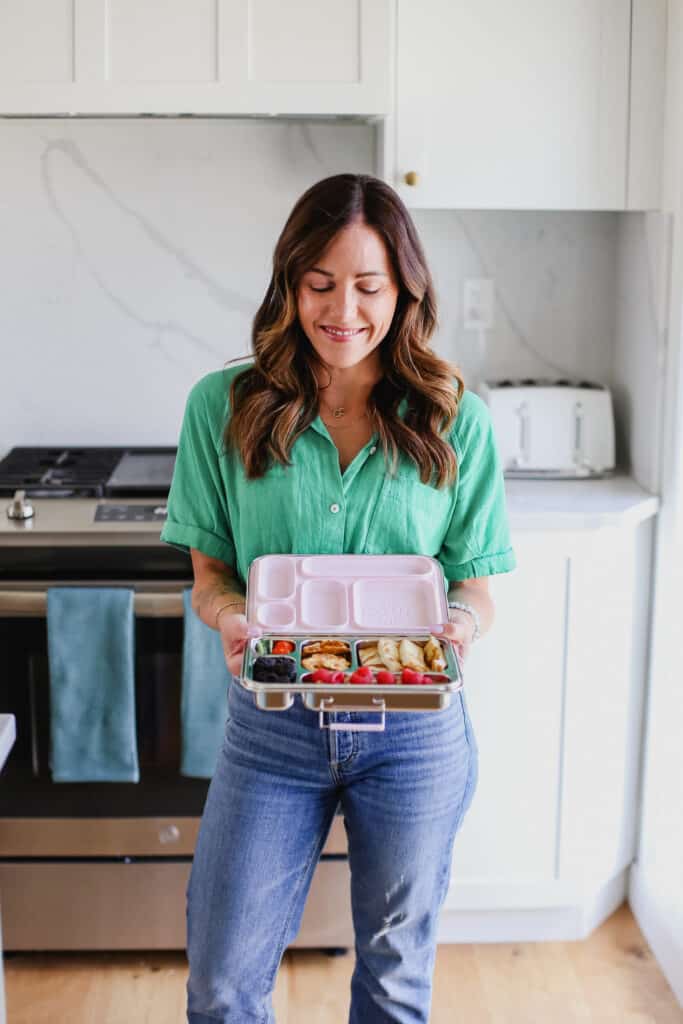
3) Snack-Style “Bento” Boxes (nut-free, mix-and-match)
12. Hummus dip box
¼–⅓ cup hummus + pita triangles + bell pepper strips + mini cheese stick.
Protein: ~14–18 g
13. Cottage-cheese sampler
½–¾ cup cottage cheese + crackers + cherry tomatoes + pineapple.
Protein: ~15–22 g
14. Edamame-egg box
½ cup shelled edamame + 1 hard-boiled egg + fruit + a few crackers.
Protein: ~18–20 g
15. Yogurt parfait box (nut-free)
¾–1 cup Greek yogurt + granola (use a nut-free granola or nut-free granola bar crumbled) + berries + 2 tbsp hemp hearts.
Protein: ~18–24 g
16. Tuna-cracker dippers
~2½ oz tuna mixed with yogurt or mayo + whole-grain crackers + cucumber slices.
Protein: ~18–22 g
17. Sunflower seed butter “dip & dunk”
2–3 tbsp sunflower seed butter + apple slices + pretzel sticks.
Protein: ~8–12 g (add cheese or yogurt to reach the target)
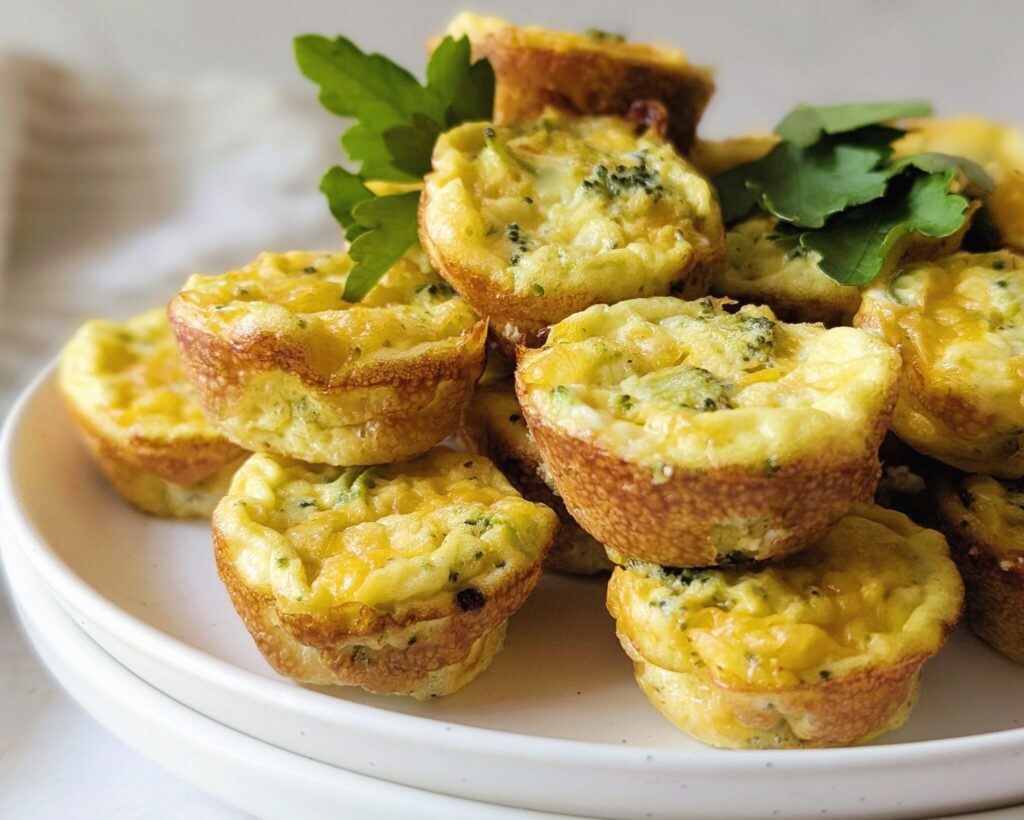
4) Egg-Based (nut-free)
18. Egg-veggie frittata puffs
2 mini frittata puffs with cheese.
Protein: ~12–16 g (add a mini yogurt to reach ~18–22 g)
Sides: strawberries, toast “fingers.”
19. Breakfast-for-lunch box
2 mini pancakes or waffles + ¾ cup Greek yogurt + 1 tbsp hemp hearts + fruit.
Protein: ~16–20 g
20. Egg salad sliders
1 egg mashed with yogurt or mayo + 2 mini slider buns.
Protein: ~10–14 g (add a cheese stick to bump to ~16–20 g)
Sides: cucumbers + ranch.
5) Plant-Forward Power (nut-free)
21. Chickpea smash sandwich
½ cup mashed chickpeas + yogurt or hummus on whole-grain bread.
Protein: ~14–18 g
Sides: sliced peppers, clementine.
22. Edamame-quinoa salad
½ cup edamame + ½ cup cooked quinoa + chopped veggies + simple vinaigrette.
Protein: ~16–20 g
Sides: crackers, kiwi.
23. Bean & cheese mini quesadillas
2 small corn tortillas + ½ cup refried beans + ¼ cup cheese.
Protein: ~16–20 g
Sides: salsa, mango.
24. Pasta salad with lentils + feta
1 cup pasta salad + ½ cup lentils + 2 tbsp feta.
Protein: ~18–22 g
Sides: cherry tomatoes, nut-free granola bar.
25. Tofu “nugget” bento
Baked tofu cubes + ketchup or yogurt-ranch + crackers + fruit.
Protein: ~14–20 g (depending on portion)
6) Leftover Remix (nut-free, low effort)
26. Rotisserie chicken roll-ups
3 oz chicken + tortilla + lettuce + dip.
Protein: ~22–26 g
Sides: watermelon, cucumbers.
27. DIY pizza crackers
Whole-grain crackers + cheese cubes + pepperoni (or turkey pepperoni) + small container of marinara.
Protein: ~14–18 g
Sides: apple slices.
28. Sushi-style wraps (nut-free)
Nori or tortilla filled with tuna, salmon, or tofu + rice + cucumber.
Protein: ~16–24 g per wrap
Sides: edamame, orange wedges.
29. Pasta + add-ins
1 cup leftover pasta + ¼ cup diced chicken or chickpeas + peas + parmesan.
Protein: ~14–20 g
Sides: berries.
7) Sweet (but substantial) Add-Ins
A little sweet can be the “buy-in” that helps the rest of lunch get eaten. I like options that bring some staying power too. Anywhere you see peanut butter in the recipe, simply swap for a nut-free butter of your choice. Label tip: some schools treat coconut differently—if you use coconut, check your school’s policy and label clearly if required.
- Nut-free energy bites (~4–8 g per 1–2 bites, depending on size)
- Give these nutritious energy ball recipes a try!
- Mini muffin (nut-free):
- Fruit leather + cheese stick.
- Yogurt tube (keep cold with an ice pack). Oh, I also have a list of the best yogurts for kids.
- Nut-free trail mix:
- Pumpkin seeds + sunflower seeds + whole-grain cereal (e.g., O-shaped) + pretzel squares + dried fruit (raisins, cherries, apricots) + a few chocolate chips.
- Optional: add toasted coconut only if your school allows it.
- Nut-free granola bars:
- Store-bought: choose bars made in peanut/tree-nut free facilities when possible; read “may contain” statements. I have a list of the best store-bought granola bars for kids!
- Homemade base: oats + seeds (pumpkin/sunflower/hemp) + dried fruit + sunflower seed butter or tahini + honey/maple + a pinch of salt; press into a pan, chill, and slice. These sweet and salty chocolate chip lentil granola bars are a fan-favourite in our house.
Portion and protein estimates: keep it low-pressure
Numbers help with planning, but lunch shouldn’t feel like a math test. Keep these reminders in mind.
- Appetites vary day to day. Growth, sleep, sports, mood, and how much time they have to eat all play a role.
- Estimates are guides. A lunch with 8 g of protein one day and 22 g the next is completely fine.
- Small, easy-to-eat pieces matter when lunch periods are short. Deconstructed meals (crackers + cheese + meat/beans) can beat a big sandwich for many kids. If you want more structure, you can add milk (≈ 8 g per cup) or Greek yogurt (≈ 12–18 g per ¾–1 cup) to almost any lunch to nudge protein toward the 10–20 g zone.
10 Tips to Make High-Protein Lunches Kid-Approved
- Keep flavours familiar. Start with foods your child already likes, then swap one thing at a time (a new dip, a different fruit).
- Use a routine, add variety. Repeat the structure: wrap + fruit + veg + dip + fun – then rotate fillings and sides.
- Make it easy to eat. Bite-size, deconstructed, or “dipper” style helps when kids have 10–15 minutes to eat.
- Lean on dips. Hummus, ranch, tzatziki, guacamole -dips invite trying and add texture.
- Offer a choice. “Yogurt or cheese today?” “Carrots or cucumbers?” Small choices build buy-in.
- Always include a ‘safe’ food. One reliable item reduces stress and pressure on everyone.
- Thermos trick. Pre-heat the thermos with hot water, then fill with very hot food; pack a spoon that feels good to use.
- Prep by category. Batch a couple of proteins (eggs, shredded chicken, lentils), wash/chop produce, and stock easy carbs (pitas, crackers, leftover rice).
- Normalize packaged foods. A nut-free granola bar, yogurt tube, or shelf-stable milk box can make lunches more realistic and more likely to be eaten.
- For selective eaters, go slow and stay neutral. Offer tiny portions of new foods with no pressure. You’ll also love these school lunch ideas for picky eaters!
Sample One-Week Nut-Free Menu (protein ballpark)
(Adjust portions for age and appetite. Add milk or yogurt anytime to bump protein by ~8–18 g.)
- Mon: Turkey-cheese wrap (~22 g) + carrots + hummus + apple + nut-free granola bar
- Tue: Greek yogurt parfait (~18–22 g) + nut-free granola + berries + seed-based energy bite
- Wed: Lentil quesadilla (~18–20 g) + salsa + cucumbers + pear
- Thu: Chicken chili in thermos (~20–25 g) + roll + melon
- Fri: Bento: egg + edamame (~18–20 g) + crackers + grapes + nut-free mini muffin
Frequently asked questions about high-protein lunches for kids
What if my child doesn’t like meat?
Use dairy, eggs, beans, lentils, edamame, tofu, soy yogurt, and seed butters. These can easily meet protein needs in a nut-free lunch. Learn more about what to do if your child doesn’t like meat.
What if nuts are banned at our school?
All ideas in this post are nut-free. Choose seed options (pumpkin, sunflower, hemp), dairy, eggs, fish, beans/lentils, and soy foods. Always check labels for “may contain” statements.
Is protein powder okay for kids?
Most kids don’t need it as I explain in this post on protein powder for kids. Whole-food options cover protein beautifully. If you use it occasionally (e.g., in an energy bite), keep portions small and choose a simple ingredient list. Skim milk powder works great too by the way! If you’re unsure, talk with your dietitian or pediatrician.
How do I keep lunches safe and appetizing?
Use an ice pack and insulated bag; keep hot foods hot in a pre-warmed thermos. Pack foods your child likes cold or room temp. For cut fruit, add a squeeze of citrus or store in a tight container to reduce browning.
Final thoughts from a dietitian mom
There’s no perfect lunch. Aim for balanced and doable most days, with one or two protein foods, a reliable carb, colourful produce, and a small fun item. Keep portions friendly, keep pressure low, and remember that what your child eats will ebb and flow. Over time, the pattern matters more than any single day.
If you want more support—done-for-you menus, lunchbox templates, snack lists, and real-life strategies for picky eating—join my Nourished Families Network community. We’ll take the mental load off your plate so you can feed your family with more ease. In the meantime, feel free to copy, paste, and tweak these ideas to fit your child and your school’s policy. You’ve got this.
This post may contain affiliate links. View our policy.


